The global cleaning industry is currently worth over $55 billion and expected to double by 2030. That means it’s a great market for new entrepreneurs, but you’ll need a house cleaning pricing guide to make sure you charge properly.
Chris Mondragon’s wife started Bumble Bee Cleaning Services in 2015 to make some extra money. It took off so quickly that Chris quit his job and helped build it into a multimillion-dollar company. The company is also top rated on sites like Nextdoor and Yelp.
We’ll share Chris’s recommendations to help you create a cleaning pricing guide and make a great living in the house cleaning services industry. We’ll cover the different types of services and share pricing the best strategies.
Keep reading or click any of the links below to jump to the section that interests you:
- What kind of house cleaning services should I provide?
- Establish an Amount to Charge for House Cleaning
- Ways to Charge for a Cleaning Service
- Strategy #1. How Much to Charge for Cleaning Per Hour
- Strategy #2. How to Calculate Cleaning Cost Per Square Foot
- Strategy #3. How Much to Charge for House Cleaning Per Room
- Strategy #4. How Much Other Cleaning Services Charge
- Strategy #5. Offer Weekly Cleaning Service Discounts
- Strategy #6. Propose Household Chores as Add-Ons
- Strategy #7. Give Free Estimates
- Conclusion
What kind of house cleaning services should I provide?
A house cleaning service will normally offer other services besides cleaning homes for residents. They may also provide services for Airbnbs, apartments, and commercial spaces. For instance, Bumble Bee also offers:
- Airbnb cleaning
- Carpet cleaning
- Disinfecting service
- Office and commercial cleaning
- Move-in and move-out cleaning
- Deep cleaning
Chris told us:
For standard house cleaning services, Chris includes:
- Cleaning and sanitizing all surfaces in the kitchen
- Dusting all furniture, walls, fans, counters, and other hard surfaces
- Vacuuming all floors
- Mopping floors
- Cleaning mirrors and windows
- Cleaning and sanitizing all surfaces in the bathroom
- Spot cleaning cabinets
- Changing linens and making the beds
- Emptying trash cans
This is a summary of the items he includes in his house cleaning services. You can find his complete cleaning services checklist in our 7-Figure Cleaning Business Blueprint.
Let’s look at what you might offer with your house cleaning business. We’ll start with cleaning Airbnbs.
What should I include in Airbnb cleaning services?
In addition to the standard services you offer as a house cleaning business, Chris suggests maintaining an inventory of your own supplies to replace toiletries, kitchen essentials, and linens. For the laundry portion, you’ll need to have someone do laundry or partner with a laundry service.
He also told us:
Check out our interview with Chris below:
What should I include in carpet cleaning services?
Carpet cleaning focuses only on rugs, carpets, and other flooring. You’ll need to assess your time differently from other services and have the special cleaning equipment to do the job right.
Chris shared his cleaning pricing guide for carpet cleaning. It includes five main cleaning points with time estimates and prices for:
- Rooms
- Hallways
- Landings
- Each stair
- Rugs
It’s typical for this type of cleaning business to have a minimum amount such as $99 for two bedrooms.
What should I include in disinfecting services?

Disinfecting services focus on cleaning surfaces with medical-grade cleaning products. The goal is to clean the space in a way that minimizes germs. I would imagine this is popular for businesses and households that have had an outbreak of COVID-19 or other illnesses.
Chris told us more about his disinfectant and eco-friendly cleaning supplies:
What should I include in deep cleaning services?
Deep cleaning should cover everything you do in standard house cleaning as well as baseboards and other hard-to-reach areas. Chris also includes dishes in his standard deep clean service and offers a variety of additional options.
How much does a deep clean cost?
Deep cleaning normally comes at a premium compared to a standard cleaning price. In Chris’s case, a deep house cleaning ranges from $199 to $319 above the standard cleaning price.
Once you know how much you’ll charge for regular services, it’s easy to decide how much to charge for deep cleaning a house.
What should I include in a move-out cleaning service?
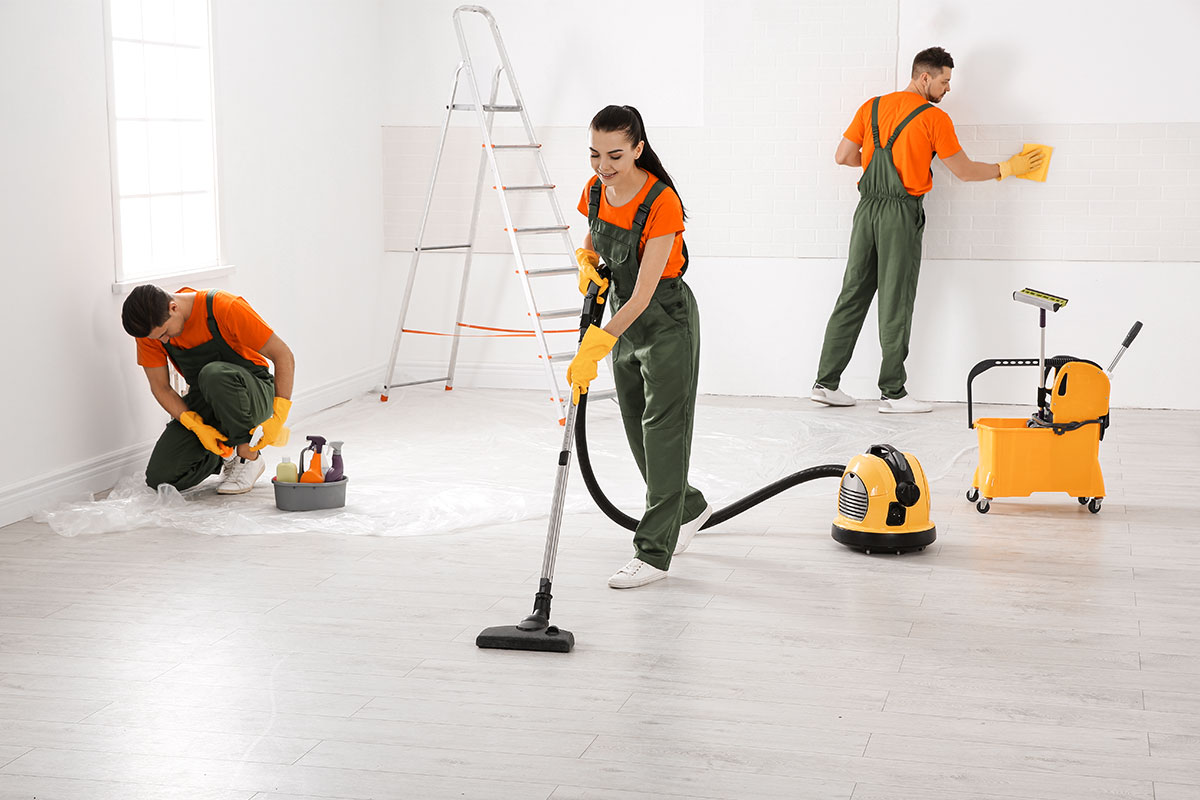
Move-out cleaning saves renters time and money by helping them get their deposits back. These services include:
- Cleaning all counters, cabinets, and appliances
- Deep cleaning the oven
- Wiping down walls and fixtures
- Cleaning the bathrooms
- Cleaning floors and carpets
- Getting rid of any expired food
Chris recommends using the move-out checklist provided by the client’s landlord as the basis for bidding on the cleaning job. Chris told us:
What should I include in office and commercial cleaning?
Offices and commercial cleaning jobs are different for every building. Chris recommends touring the property and establishing the following:
- Square footage
- Number of desks
- Percent of floors that are carpet and tile
- Number of windows
- Number of toilets and sinks
- Square footage of counters
- Kitchens in the building
- Parking lots
- Special requirements
These jobs can be complex, but they need routine cleaning services more often. Commercial buildings also tend to be better suited for pricing per square foot because you can just assign a base price per square foot to each task and then multiply by quantities. It might look like the table below:
| Task | Quantity | Price Per Task | Total |
| Carpet (per square foot) | 6,000 | .1 | $600 |
| Tile (per square foot) | 10,000 | .2 | $2,000 |
| Desks | 60 | 1 | $60 |
| Windows | 600 | .1 | $60 |
| Toilets | 50 | 5 | $250 |
| Sinks | 10 | 2 | $20 |
| Kitchens | 2 | 10 | $20 |
| Counters (per square foot) | 100 | .1 | $10 |
| Parking lots (per square foot) | 50,000 | .02 | $1,000 |
| Special Requirements | N/A | 0 | 0 |
| Total | $4,020 |
Establish an Amount to Charge for House Cleaning

Every cleaning company will have operating costs. One powerful difference between a successful cleaning business and other cleaning companies is how well the business owner manages those cleaning costs. Your house cleaning rate needs to cover the following expenses:
- Labor
- Payroll expenses and taxes
- Marketing
- Cleaning supplies
- Fuel
- Insurance
- Repairs
- Rent
- Utilities
- Professional fees
Based on Bumble Bee Cleaning Service’s annual expenses, you might expect the total overhead costs to be approximately 87% of the amount that you make if you have employees. If you’re a single-person house cleaner, the total overhead will be between 30% and 50%.
In the following sections, I will share a few examples. You can use similar math regardless of what type of cleaning business you run. Bumble Bee primarily does house cleaning, so I refer to house cleaners in these sections.
We’ll look at various situations to give you an idea of what the costs are for Queen Bee and what you can expect to pay when you start to charge for house cleaning.
How Labor Impacts the House Cleaning Price
Labor typically accounts for approximately 50% of the costs of running a house cleaning company. If you have employees, you’ll typically need to pay them either an hourly rate or by billable hours.
Just make sure you don’t try to consider them independent contractors. Chris told us:
To help establish an hourly rate, check what house cleaning companies in your area pay their housekeepers. The Bureau of Labor Statistics has a lot of data on hourly rates for the house cleaning industry. Most places will pay an hourly rate of $15 or more.
Remember to train your staff well because employee efficiency can impact both quality and overhead. Here’s one possible scenario:
- Employee pay: $15 per hour
- Employee pay as a percentage of revenue: 50%
- Number of people on cleaning crew: 2
That means you’ll want to charge the customer at least $60 per hour. That’s far lower than the cleaning rates for many house cleaning companies. After all, a house cleaner has other costs that go into the standard cleaning fees.
Payroll Expenses and Taxes

On top of employee pay, your house cleaning price will also need to cover the costs of payroll expenses and taxes. The government requires employers to collect:
- Income taxes: You’ll need to withhold these for all employees using the information in Publication 15-T.
- Payroll taxes: The employee pays 7.65%, and the employer pays 7.65%.
- State taxes: There are seven states without income taxes. You’ll have to collect these from employee pay unless you live in Alaska, Florida, Nevada, South Dakota, Texas, Washington, or Wyoming.
- Other deductions: Contributions for insurance or a 401(k) will need to be deducted if you offer those benefits.
There are a lot of tasks associated with compliance, so you may want to outsource your human resources. Most of these companies start around $39 per month plus $6 monthly for each employee.
The 7.65% tax increases the $60 per hour fee to $65 per hour. That figure is starting to get closer to the cleaning rates for Molly Maid’s basic cleaning package at $75 to $96 per hour.
Your revenue will also need to cover other costs such as cleaning supplies, which we’ll discuss next.
Cleaning Supplies
Based on standard cleaning services, you’ll probably need to spend an average of $3 to $5 per hour on cleaning supplies. You’ll be buying these in bulk to save money, but Chris estimates that the supply list for many cleaning companies will be around $900 for start-up costs.
That means you need to charge around $70 per hour.
Vehicle, Fuel, Insurance, and Repairs

Local businesses will have to drive to provide weekly cleaning to residential and commercial clients. That means you’ll need to maintain a vehicle and insurance. At Bumble Bee, these costs are approximately 17% of revenue.
This is why your credit score is so important to businesses. Bankrate estimates that insurance costs 25% more for an average credit score than excellent credit. People with poor credit spend twice as much as any other group.
If you add 17% to the $70 cleaning crew rate, we’re at $81.90 per hour without any administrative costs, marketing costs, rent, and utilities.
Marketing and Administration Costs
The U.S. Small Business Administration recommends spending 5% to 15% of your desired revenue on marketing your business. Chris doesn’t think you need to spend that much.
If you have good software, you can automate many of your tasks and reduce the final cost of operating. Chris runs his own marketing and spends between 2.4% to 6.2% per month, with the lower percentages during the holidays.
Rent
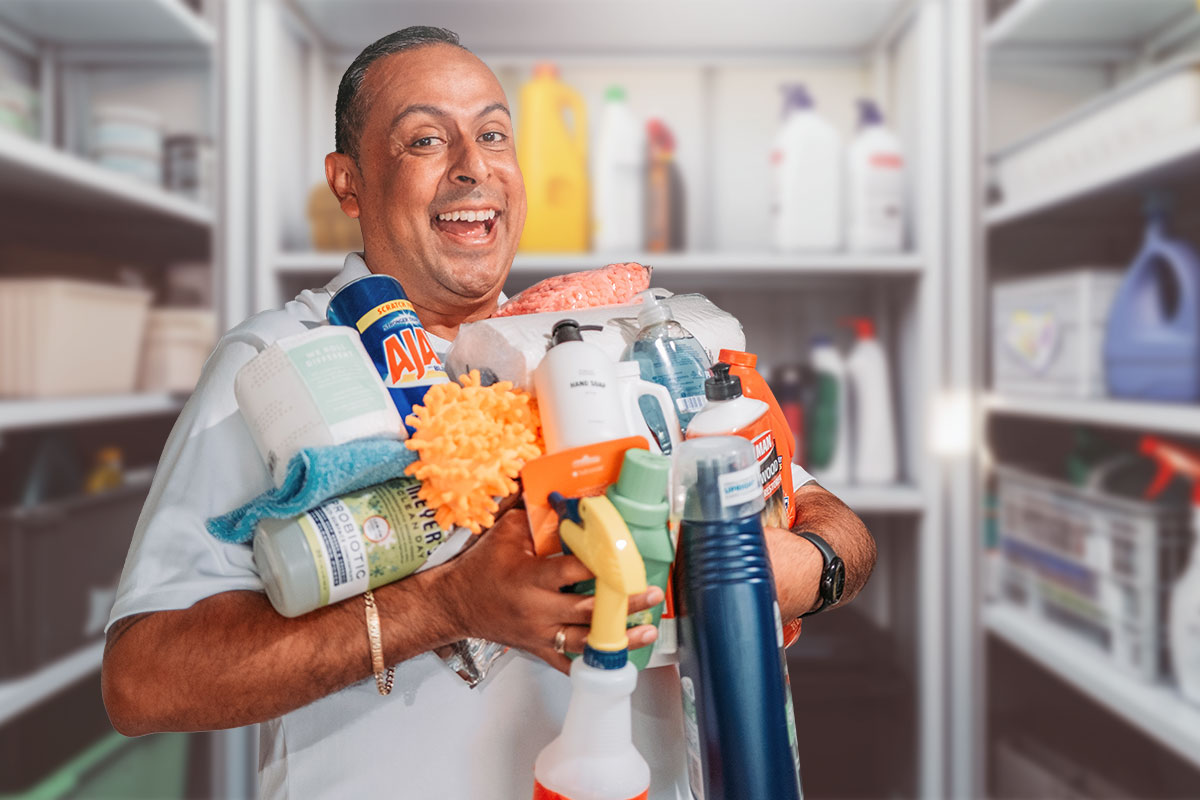
Chris’s rent and utilities are based on a home business. This is a great way to save a lot of money with legal accounting maneuvers at tax time. If you store supplies in your home or do office work out of it, you can claim the space you use and the energy consumption on your taxes.
There are a lot of rules governing this, but if you choose the simplified method, you can claim up to $1,500 a year. If you use the actual expenses, it can go higher (but may increase your chances of an audit). You’ll need to measure the square footage of the space used.
You don’t have to include this in your pricing, but if you do, it will raise the hourly rate by about $1 per hour.
Utilities
If you have a home-based business, you’ll be using the energy associated with work as a write-off. If you have a separate location where you store everything, you’ll need to cover those costs.
Utilities shouldn’t be too much unless your cleaning business does a lot of laundry or manufacturing in house. To give you an idea, Chris only spends about $300 per month on utilities.
Professional Fees
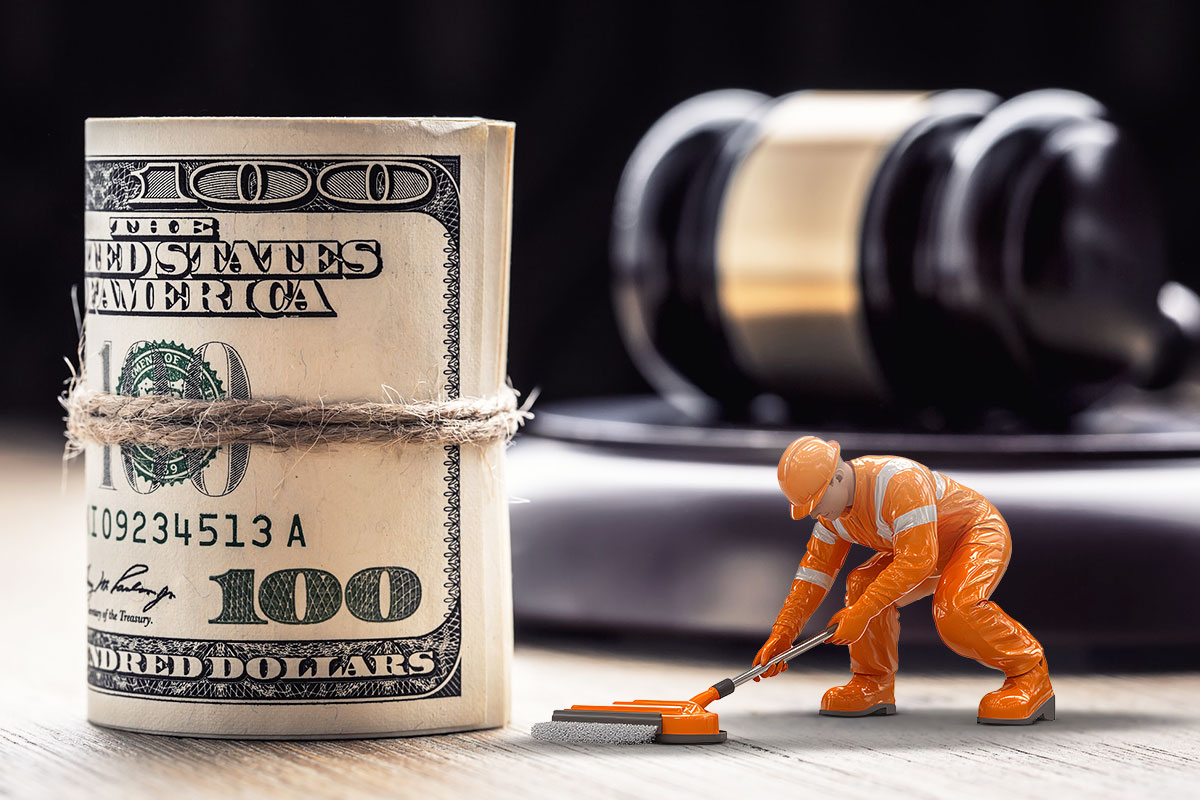
Local companies will often need a lawyer and an accountant to help them structure their domestic services correctly. You’ll want to budget for these. Chris assumes approximately $1,000 per month for his cleaning company, but different cleaning services may have different needs.
Ways to Charge for a Cleaning Service
There are a variety of ways to charge for a cleaning service. We’ll cover the most common pricing strategies cleaning businesses use, including:
- Charging by the hour
- Pricing per square foot
- Pricing per room
- Matching house cleaning prices in your area
- Offering weekly cleaning subscriptions with discounts
- Proposing household chores as add-ons
- Giving free estimates
Strategy #1. How Much to Charge for Cleaning Per Hour

This method can create fluctuations in costs based on how long it takes to clean the property. This works best if the client provides all the cleaning supplies and just needs someone to help. You may also prefer to do this if a client wants specific eco-friendly or specialty cleaning supplies.
You’ll probably want to charge a higher rate for the first hour. I typically assume that it will cost me $50 just to drive somewhere. Based on Bumble Bee’s pricing guide, Chris has established that cleaning services prices should be approximately $70 for the travel costs and booking fees.
To calculate how much you want to charge, assume the following:
- 2,000 working hours per year
- 65% profit margin when you are the worker or 15% when someone else is doing the work
- A goal of $100K per year to start
You’ll divide your income goal by the hours in a year to get an hourly rate. See the example below:
$100,000 / 2,000 hours = $50 per hour
The $50 hourly rate is for revenue only. Divide by 0.65 to determine how much you’ll need to earn in revenue to make that in profit instead:
$50 / 0.65 = $76.92 per hour
Let’s make it a nice even number so that it’s easy to multiply. We’ll round it to a straight $80 per hour. If you have four cleaners and you make $320 per hour in revenue, you’ll earn $48 per hour.
Your actual profit will be higher if you charge an extra fee for the first hour. Chris charges an additional $70. In this case, that would make the first hour $150, and each additional hour is $80.
Strategy #2. How to Calculate Cleaning Cost Per Square Foot
The price per square foot is straightforward to estimate. Given that almost every address is a public record, you can look it up to check the square footage of the house. Then to charge by square foot, multiply the square feet by 20 cents (or divide by five).
Example: 1,400 square feet
1,400 × $0.20 = $280
1,400 / 5 = $280
You can make it more complicated and separate it by carpet and tile. Charge $0.20 for carpet and $0.25 for tile (examples for easy math).
Example: 1,000 square feet of carpet and 400 square feet of tile
(1,000 × $0.20) + (400 × $0.25) = $300
Strategy #3. How Much to Charge for House Cleaning Per Room

Another easy way is to price by room or by fixture. For instance, Chris charges a fee for each room and separate fees for specific tasks:
- Pricing for 1 to 10 rooms
- Full restroom pricing
- Half bathroom pricing
- Add-ons like full window cleaning
Each has a specific price. Unless a homeowner has a unique setup, he can quickly estimate the cost based on the number of rooms, restrooms, and add-ons. You should check out how he does it on the Bumble Bee Cleaning Service booking page.
He uses Booking Koala to automate the whole booking process. Check it out, and let us know what you think!
Strategy #4. How Much Other Cleaning Services Charge
Professional cleaners have plenty of sites to help evaluate the average house cleaning cost in their area. Many of these sites are the same ones you’ll use to find customers for your house cleaning service.
Thumbtack makes it easy to establish the rates house cleaners charge in a particular area. While you’re on Thumbtack, you might want to sign up to provide cleaning services.
Strategy #5. Offer Weekly Cleaning Service Discounts
Whether you’re a residential cleaning business or you offer commercial cleaning services, consider the long-term value of recurring customers. Your cleaning company can benefit tremendously from offering regular cleaning services at a discount to loyal customers.
House cleaners benefit from offering discounts for routine cleaning in the following ways:
- Increased efficiency: Recurring jobs mean less travel time, more cleaning jobs completed per day, and reduced house cleaning costs.
- Better forecasting: You can order your own cleaning supplies with more accurate forecasts.
- Better scheduling: It’s easier to anticipate how many house cleaners to schedule each day.
- Better cash flow: The more your cleaning jobs occur on a recurring basis, the better your cash flow will be.
- Reduced churn: CB Insights says that subscription models change the customer retention dynamic from mostly churning to mostly retention.
- Increased lifetime value: The value of a customer increases consistently over time.
- Lower marketing costs: Your cleaning company will be able to spend less on marketing when you have higher retention rates.
- Lower overhead-to-revenue ratio: As a cleaning company’s recurring jobs grow, the overhead stays the same until you have to invest in more equipment or administration.
- Happier customers: Everyone loves a clean home! Someone coming in each week and cleaning their home will delight customers.
We used the pricing from Bumble Bee Cleaning Service to show how their subscription model increases the revenue over the course of a year. As you can see, offering a discount of 10% monthly, 15% bi-weekly, and 20% weekly can dramatically increase the revenue of a house cleaning business.
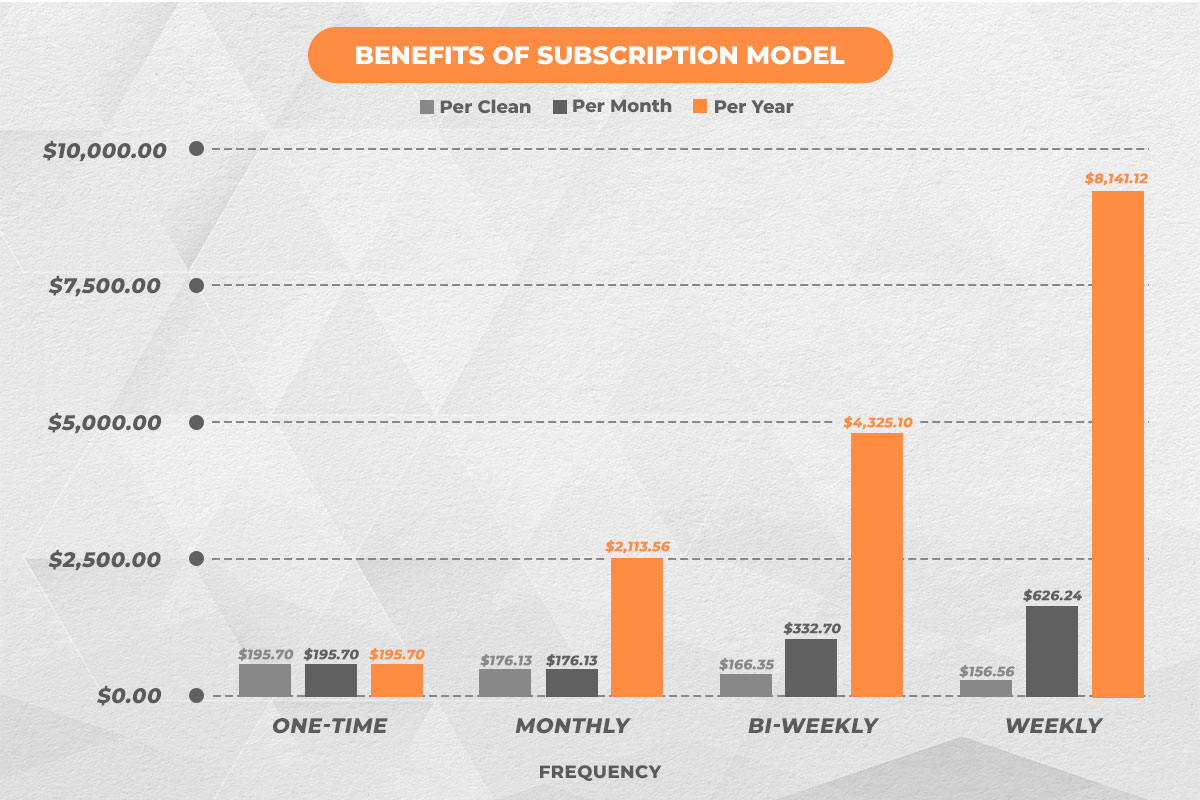
Strategy #6. Propose Household Chores as Add-Ons
Customers might want you to offer other services like appliance cleaning. Anticipate this and have easy ways to calculate cleaning cost estimates. Some of the most common add-ons are:
- Deep house cleaning
- Appliance cleaning
- Laundry
- Dishes
- Indoor and outdoor window washing
- Carpet cleaning
You can add each of these to your base house cleaning cost to help improve your revenue per cleaning job. You can quickly turn a $200 cleaning job into a full day if someone wants all the add-ons.
These services can increase the cleaning rate to potentially as high as $1,000 daily and make it so that your cleaning crew only has to clean one house that day. That’s great for reducing expenses!
Strategy #7. Give Free Estimates
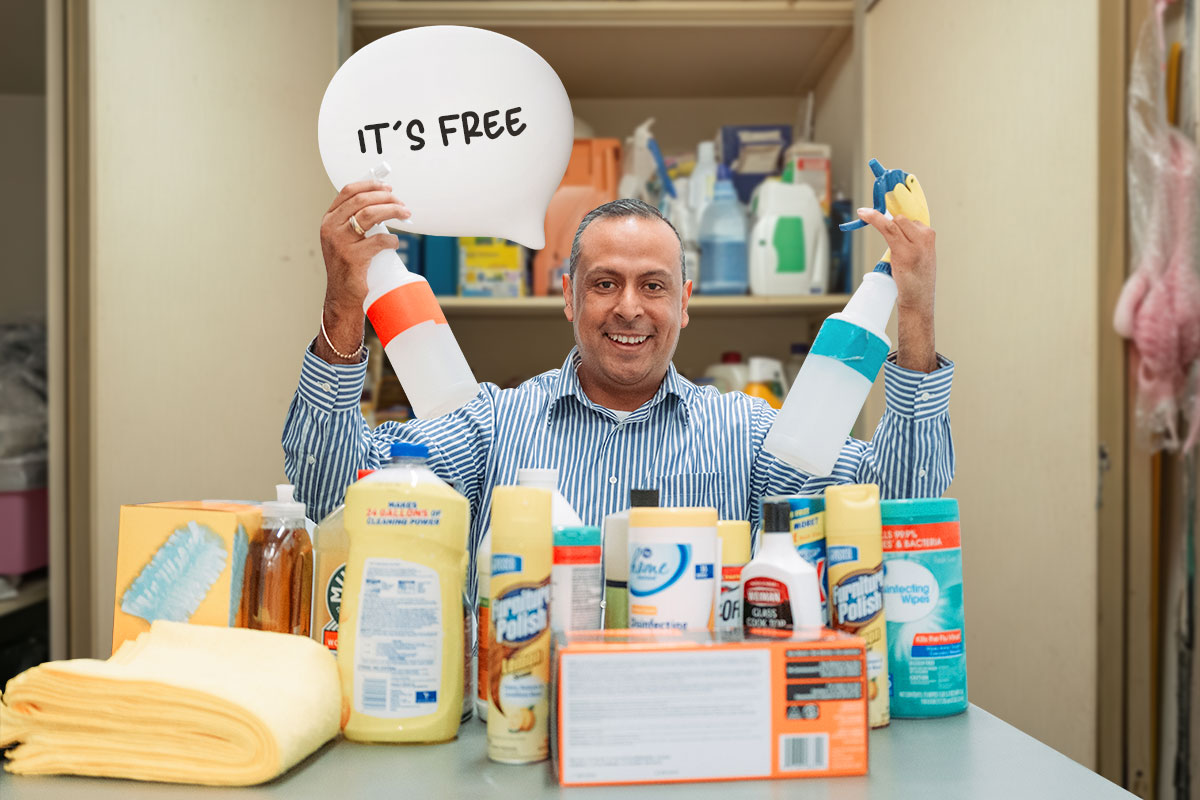
Whether you’re doing a deep clean, a standard home cleaning, or post-construction cleaning, people love free stuff and businesses should too! Chris told us:
A free estimate gives you a chance to view the property and eliminates the risk of underestimating with a flat rate. While there, you can establish the square footage and determine whether it needs a deep clean.
Plus, it gives you a chance to develop a relationship, ask questions, and help the customer develop a plan. This may increase overhead costs, but it builds loyalty.
Conclusion
Our UpFlip house cleaning pricing guide looked at different types of cleaning service offerings and what to consider when establishing your cost of doing business.
We discussed the pricing model for hourly cleaning services as well as how to charge per square foot and per room. Then we discussed the benefits of add-on cleaning services like laundry services and how to increase customer value by using discounts to encourage routine cleaning.
What type of pricing do you plan to adopt with your cleaning business?





